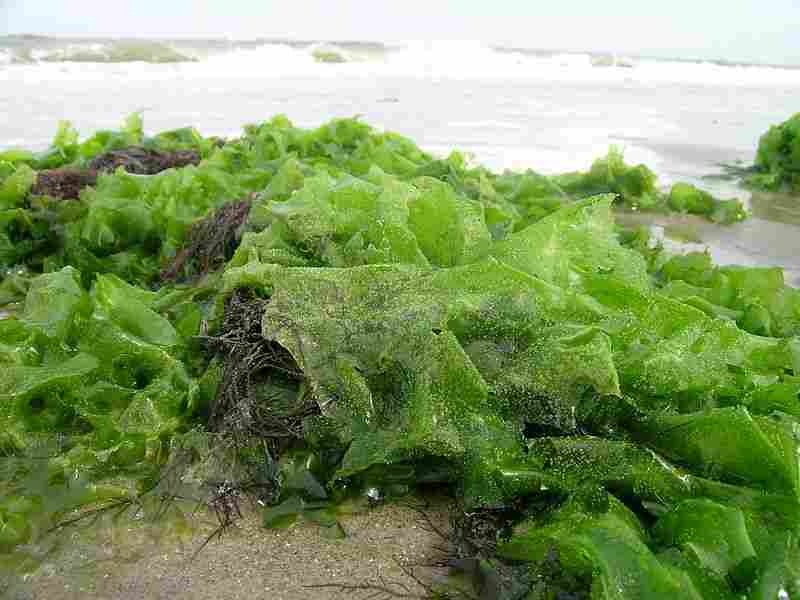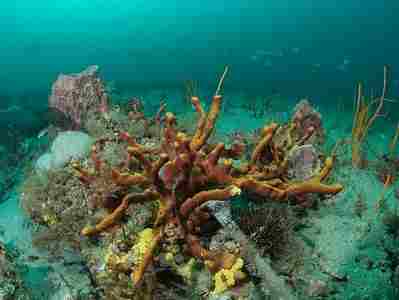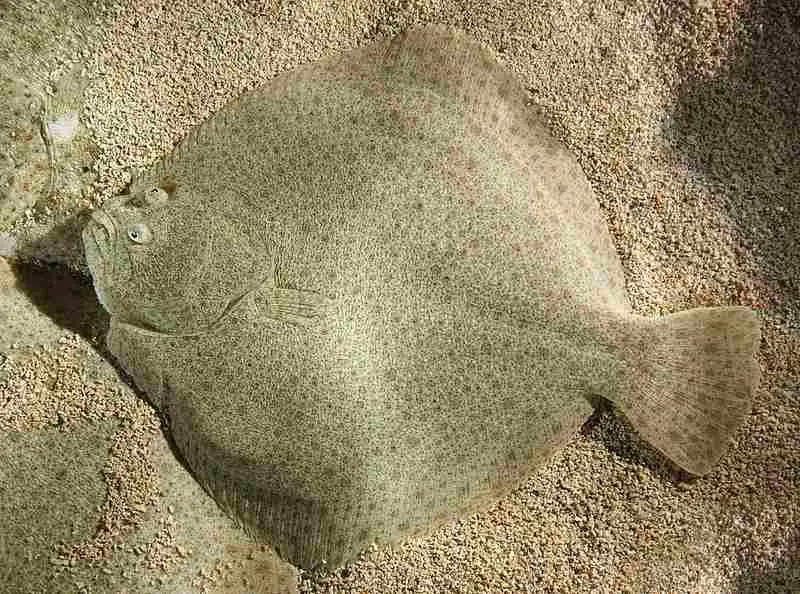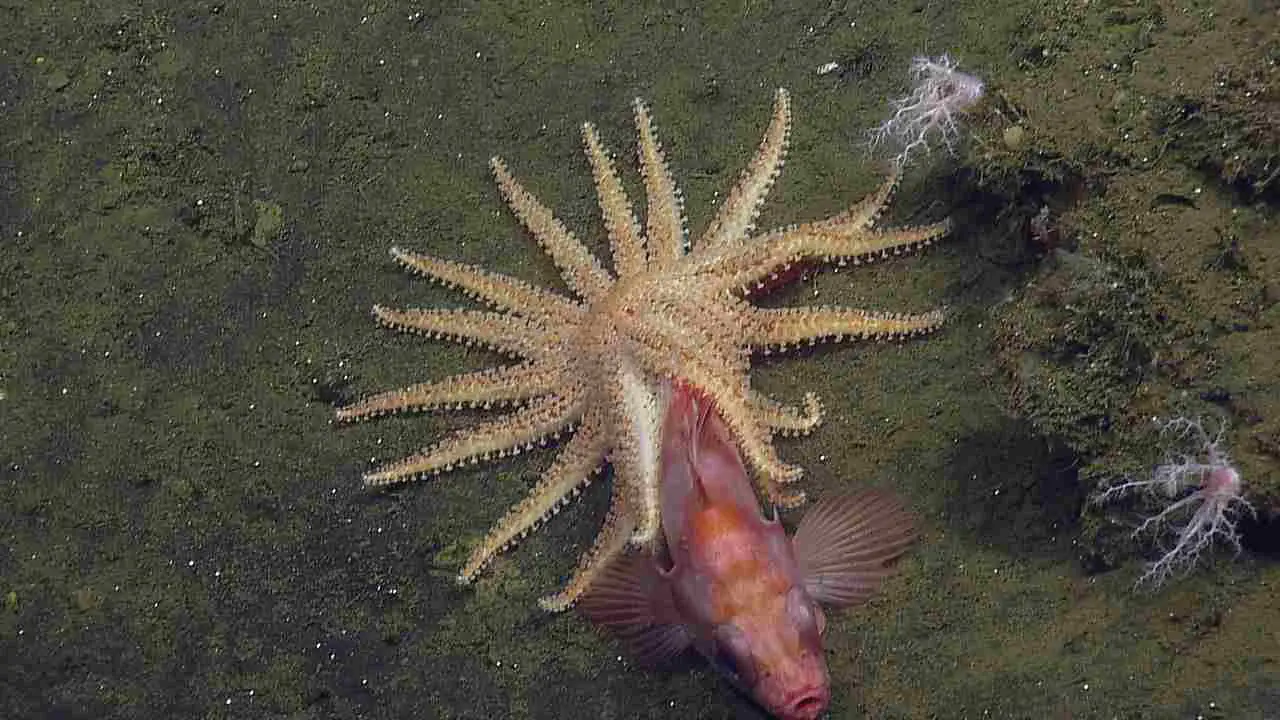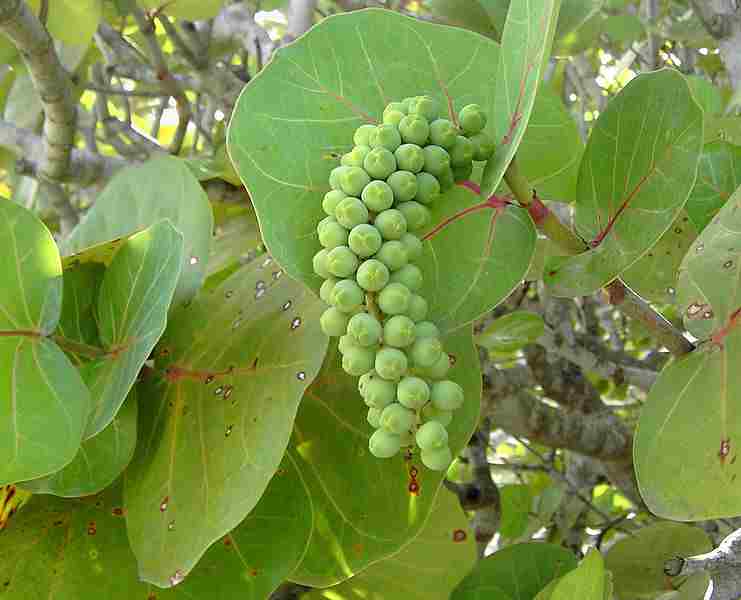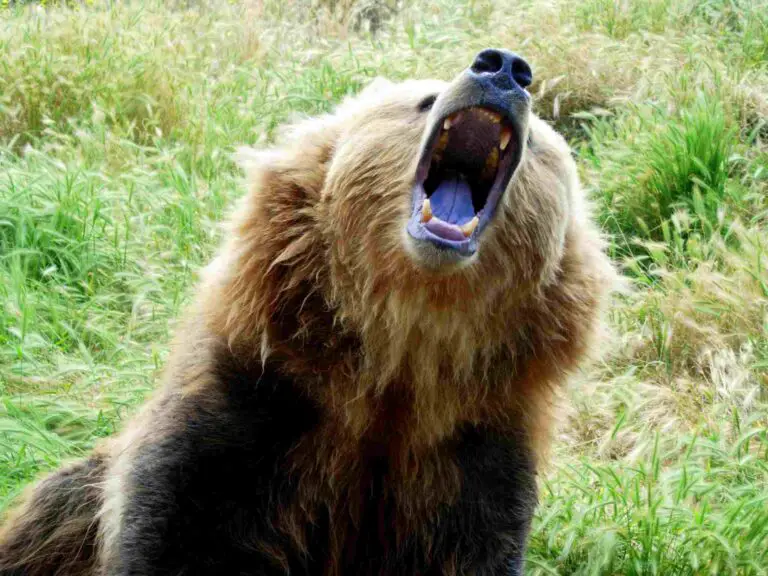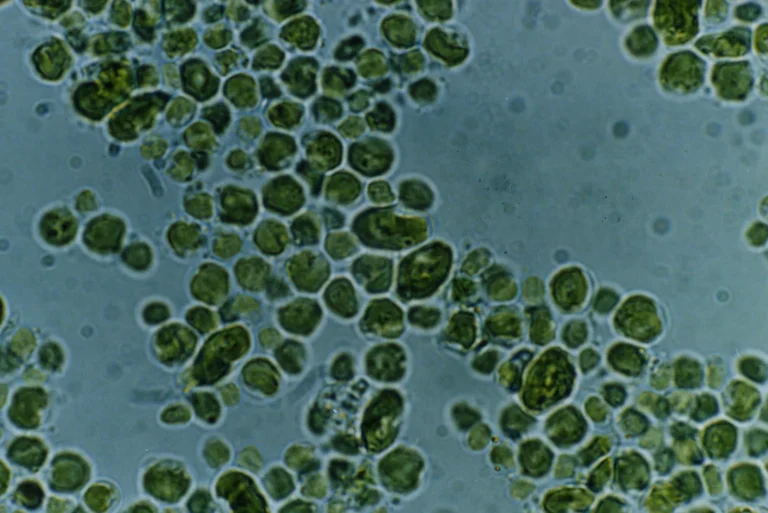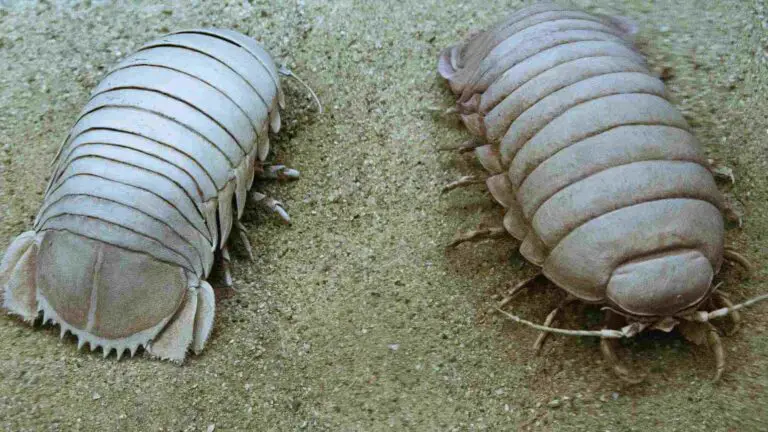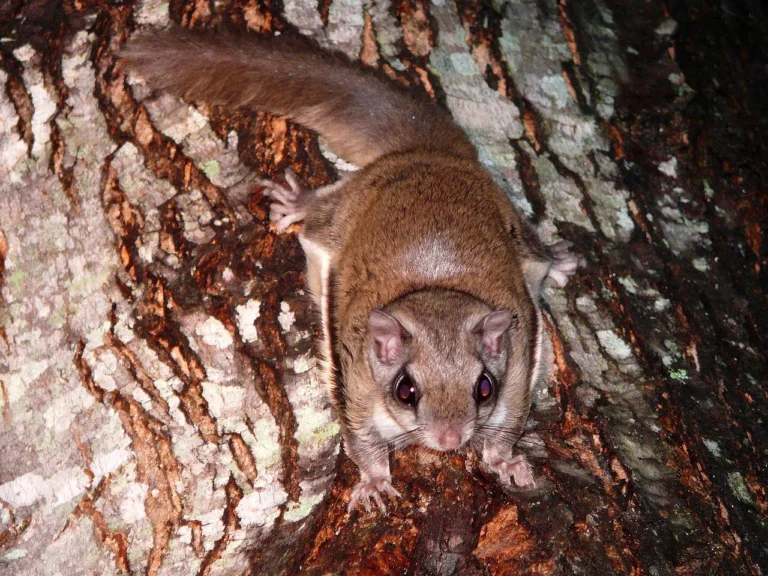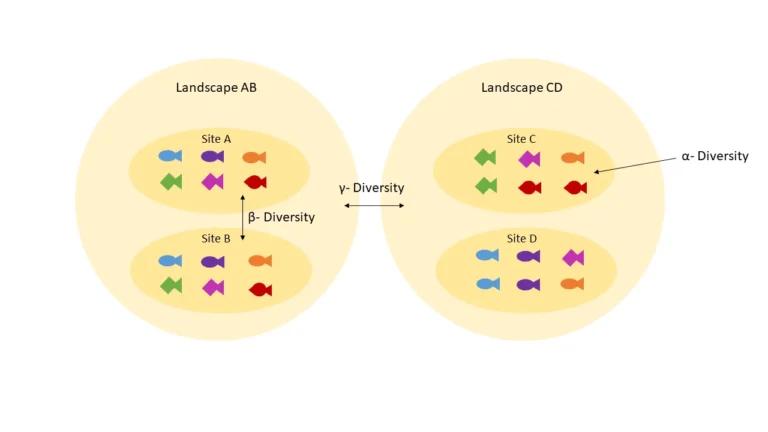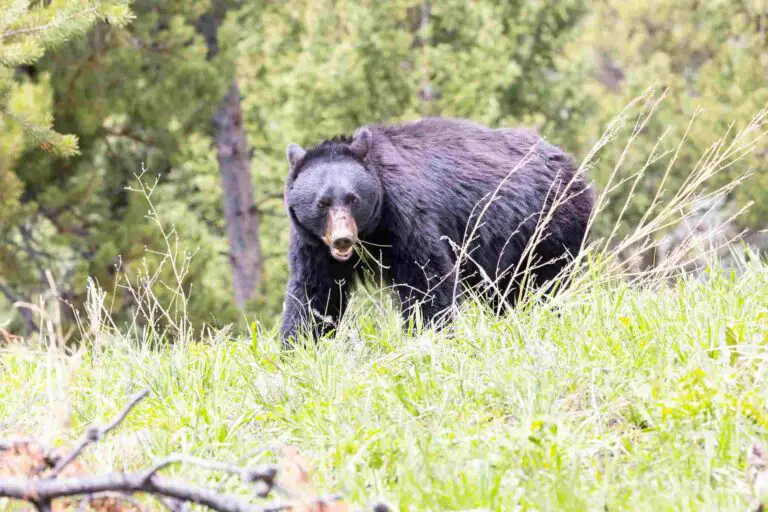9 Plants in the Kelp Forest Ecosystem and their Features, Functions
Plants in the kelp forest are; eelgrass, star grass, turtle grass, widgeon grass, shoal grass, manatee grass, kelp, sea moss, and sea lettuce.
It must be noted that kelps themselves are not plants, but rather a type of brown algae [3], although they are discussed separately and briefly here. Also, while a given kelp forest may not feature all or even any of such vascular plants, they are still ecologically linked because they occupy the same marine niche and are often geographically associated.
This article discusses plants in the kelp forest ecosystem and their features, as well as functions, as follows;
-Seagrasses (Vascular Plants) in the Kelp Forest
As implied in the introductory section, the real plants in the kelp forest ecosystem are mostly halophytic seagrasses, such as eelgrass, star grass, turtle grass, widgeon grass, shoal grass, and manatee grass.
1). Eelgrass: One of the Plants in the Kelp Forest Ecosystem
Eelgrass, scientifically referred to as Zostera marina, is a clonal marine plant (or halophyte) that belongs to the family Zosteraceae [4].
It is part of the larger seagrass group, which includes several species that are adapted to underwater life in coastal marine environments. Related species of seagrass include Zostera japonica, Posidonia oceanica, and Thalassia species, among a handful or others. These seagrasses are all ecologically important, and share similarities in their roles within the marine ecosystem.
Ecological Roles of Eelgrass in Coastal Marine Environments
Eelgrass plays some vital ecological roles in shallow coastal marine environments like the kelp forest. Its roles include; habitat and nursery provision, nutrient cycling, erosion control, blue carbon-capture and storage, and biodiversity support. These are further highlighted briefly below.
Dense underwater meadows are formed by eelgrass, which serve as essential habitats and nursery sites for various marine organisms. These meadows may have structures that provide shelter, foraging locations, and breeding grounds for fish, and invertebrates like crustaceans, among other marine animals.
Recycling of nutrients is a natural process that is supported by eelgrass, in coastal ecosystems. It helps to remove excess nutrients from the water column (by absorbing them for growth and photosynthesis in the presence of solar radiation), thereby improving water quality by acting as a natural filtration medium.
Eelgrass beds can be effective for stabilizing sediment and shorelines, which can in turn reduce coastal erosion [11]. They often develop dense root systems that bind sedimentary particles together, such that coastlines become protected from wave action, and other agents of erosion.
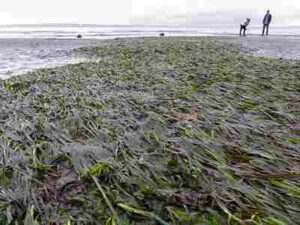
Blue carbon sequestration is facilitated by eelgrass, which is capable of capturing and storing carbon dioxide from the atmosphere in its biomass and the sedimentary substrate, in such a manner that helps mitigate climate change and its ecologic/environmental impacts, at least on a local scale.
Lastly, these seagrass meadows contribute to coastal species richness by supporting a rich diversity of species, including commercially important fish, shellfish, and waterfowl.
Geographical Relationship with Kelp Forests
Eelgrass beds and kelp forests are often two distinct but interconnected ecosystems found in shallow coastal marine environments. In some cases, eelgrass may grow in physical contact with kelp beds.
Eelgrass meadows are typically found in shallow subtidal and low intertidal zones, often within sandy mudflats. They thrive in areas with diminished wave intensity and high levels of light penetration.
Kelp forests are dominated by large brown algae and are found in slightly deeper subtidal zones with stronger wave action, although they are also shallow coastal features. They usually require rocky substrates for attachment.
While they have different ecological niches, these two autotroph-dominated ecosystems can coexist and sometimes even overlap within transitional ecotones. Eelgrass beds may provide habitat and nursery areas for species that later inhabit nearby kelp forests, thereby establishing a linkage between these ecosystems.
Overview of Definition and Characteristics of Eelgrass
Eelgrass (Zostera marina) is a marine clonal plant that forms productive underwater meadows in shallow coastal areas, where it serves as essential habitat and contributes to nutrient cycling as well as blue carbon sequestration.
The depth in which eelgrass grows spans across a range from as shallow as 1 meter below the low tide line (MLLW), to greater than 10 meters deep.
Eelgrass grows in intertidal and subtidal portions of estuaries, shallow bays, and coves around the world in temperate climates, often in sandy mudflats.
2). Star Grass in Kelp Forests and Other Shallow Coastal Marine Environments
Star grass, also referred to as Halophila engelmannii, is a species of seagrass that grows in shallow coastal marine environments.
Seagrasses are a group of flowering marine plants that have distinctive characteristics (such as elongate, grass-like leaf structures) and play significant ecological roles. They belong to different families, with the main groups being; Zosteraceae, Hydrocharitaceae, Posidoniaceae, Ruppiaceae, and Cymodoceaceae [14]. Below is a summarized outline of some key points regarding these families;
Zosteraceae family includes eelgrass (Zostera marina) and other similar marine angiosperms.
Members of family Hydrocharitaceae include various tape grasses and other seagrass species.
Family Posidoniaceae includes notable members like Posidonia oceanica, commonly known as Neptune grass [9].
Species in Cymodoceaceae family includes star grass (Halophila engelmannii) among others.
Ecological Roles of Star Grass
Star grass, like other seagrasses, serve essential ecological roles in coastal marine environments. It must be noted that the ecological roles discussed for each of these plants throughout the article, will be highly similar to those of other species, as they collectively perform the same set of ecological functions.
Seagrasses like star grass, provide critical nursery sites and habitats for various marine species, which range from vertebrates to invertebrates.
They help in the cycling and recycling of nutrients within coastal ecosystems, thereby contributing to improved water quality.
Seagrass meadows help to stabilize sediments and shorelines, thereby reducing the severity of coastal erosion. These meadows support diverse marine life, including some commercially important species.
Geographical Relationship with Kelp Forests
While star grass and kelp forests share similarities as coastal marine ecosystems, they are often found in different ecological niches.
The dominant autotrophs in kelp forests are large, brown algae, which form beds that are typically found in subtidal zones subject to waves and longshore currents.
Seagrass meadows, including those with star grass, are commonly found in low intertidal areas, as well as shallow, sandy mudflats in subtidal zones. These plants thrive in areas with minimal wave impact and high intensity of light.
Overview of the Types, Features and Uses of Seagrasses
While seagrasses are not categorized into types, they include various species that belong to different families, such as Zosteraceae, Hydrocharitaceae, Posidoniaceae, and Cymodoceaceae.
Seagrasses are important to marine life because they provide habitat, food resources, and nursery areas for a broad range of marine species, thereby contributing to biodiversity and ecosystem vitality.
Features of seagrasses include organelles like stems, roots, leaves, flowers, fruits, and seeds. They reproduce by pollination, with pollen transported by water. The roots and rhizomes anchor the plants and absorb nutrients.
Seagrasses are not typically harvested for direct human use. Instead, their importance lies in their ecological roles, such as supporting fisheries (through food and habitat provision), maintaining/improving water quality, and stabilizing coastlines.
3). Turtle Grass: One of the Plants in the Kelp Forest Ecosystem
Turtle grass, scientifically known as Thalassia testudinum, is a species of marine seagrass that is found in shallow coastal marine environments, primarily in the Gulf of Mexico and the Caribbean Sea [5].
It is part of the seagrass family, which includes various species adapted to underwater life. While there are other seagrass species, turtle grass (T. testudinum) is particularly notable for its extensive presence in the Caribbean region.
Ecological Roles of Turtle Grass
Turtle grass plays multiple, vital ecological roles within its habitat, such as habitat formation, where it forms extensive meadows in slow-flowing, shallow waters, thereby providing habitat and shelter for various marine organisms [16].
The dense vegetative beds help to stabilize sediments and prevent coastal erosion. Like other seagrasses, turtle grass also contributes to nutrient cycling in coastal ecosystems, and helps to enhance water quality.
It can serve as a nursery site for juvenile fish and various invertebrates, thereby contributing to the biodiversity of coastal aquatic ecosystems.
Geographical Relationship of Turtle Grass with Kelp Forests
Turtle grass meadows and kelp forests are distinct ecosystems, that are typically found in different geographical locations. These locations are highlighted here. However, some transitional intertidal zones occupied by kelp forest may also play host to turtle grasses, so that the latter can be categorized among plants in the kelp forest on the basis of niche overlapping.
Turtle grass is primarily found in warm, tropical and subtropical regions, including the Caribbean Sea and the Gulf of Mexico earlier mentioned. It performs best in calm, shallow waters with muddy or sandy substrates.
On the other hand, kelp forests thrive in colder, temperate regions, often in areas that are characterized by prominent wave activity and the presence of rocky substrates.
Overview of Turtle Grass Species and its Preferred Habitat
Turtle grass, scientifically known as Thalassia testudinum; is a species of marine seagrass that commonly occurs in shallow coastal waters of the Caribbean Sea, the Gulf of Mexico, and the southeastern United States.
The habitat of turtle grass meadows is typically within calm, shallow (brackish or marine) waters with sandy or muddy substrates. It is commonly found throughout the Caribbean region and parts of Florida.
4). Widgeon Grass in Kelp Forests and Other Shallow Coastal Marine Environments
Widgeon grass, scientifically referred to as Ruppia maritima, is a submerged aquatic plant that is found in shallow coastal marine environments.
It is often associated with seagrasses but is not a true seagrass. Instead, it is considered a freshwater autotrophic species with significant salinity tolerance. Widgeon grass belongs to the family Ruppiaceae, whose members include various, submersed ditch-grasses.
Characteristics of widgeon grass include simple or branched stems, with narrow, alternate leaves.
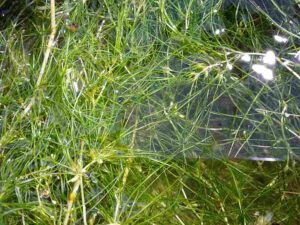
Ecological Roles and Uses of Widgeon Grass
Ecological roles of widgeon grass include habitat formation, water quality control, and support of nearshore communities.
Widgeon grass can form significantly dense and expansive underwater meadows in brackish and saline waters. Its structures provide habitat and anchorage for various aquatic organisms, including fish, mollusks, crustaceans, and other invertebrates.
Like seagrasses, widgeon grass contributes to local cycling of nutrients, and maintains water quality by stabilizing substrates and trapping sediments.
A notable attribute of widgeon grass is its ability to survive in a wide range of salinity conditions, from freshwater to highly saline zones (0 to 70 ppt) [14].
Widgeon grass beds support nearshore marine communities through their various ecosystem services, and are important for coastal biomes.
Geographical and Ecological Relationship with Kelp Forests
Widgeon grass beds and kelp forests can occur as separate ecosystems with distinct geographical locations and spatial coverage.
Widgeon grass is typically found in shallow, brackish or saline coastal waters along the coasts of the Atlantic and Pacific, as well as in wetlands occurring across the Western and Midwestern states of the United States.
Kelp forests are more commonly associated with colder temperate regions and rocky substrates. However, widgeon grasses can be found in some subtropical and brackish regions occupied by kelp, where it may contribute to local primary production.
Overview of Widgeon Grass Habitat and Adaptive Characteristics
Widgeon grass tends to thrive in shallow coastal lagoons, bays, estuaries, and brackish wetlands. It can grow in a range of salinities, from freshwater to highly saline environments.
Ruppia maritima (widgeon grass) is not a true seagrass, but is rather considered a freshwater species with a notable degree of tolerance for saline conditions, so that it is often found thriving in brackish and saline waters.
The salinity tolerance range of Ruppia maritima is fairly broad, as it can tolerate a various levels of salinity, from 0 to 70 parts per thousand (ppt).
5). Shoal Grass: One of the Plants in the Kelp Forest Ecosystem
Shoal Grass (Halodule wrightii) is a halophytic plant that belongs to the family Cymodoceaceae. It is native to the seacoasts of some warm oceans worldwide [6]. This marine plant is closely related to other seagrasses and shares several similarities with them.
Ecological Roles and Uses of Shoal Grass
Ecosystem functions of shoal grass are similar to other species of marine plants, and include habitat formation, erosion control, biodiversity support, and water quality improvement.
Shoal grass is considered a pioneering plant with a high degree of adaptability to various conditions in shallow water terrains. It is known to form underwater meadows in areas such as algal beds, sandy beaches, mangroves, coastal lagoons and rocky shores, as well as unvegetated soft bottoms.
Like other seagrasses, shoal grass plays an effective role in the stabilization of coastal sediments and prevention of erosion. These seagrass beds can form dense structures that provide refuge and habitat for a variety of marine organisms, including fish, crabs, and some juvenile species like spotted seatrout [7].
Shoal grass contributes to maintaining water quality by absorbing nutrients and trapping particulates in the water column.
Geographical Relationship with Kelp Forests
Shoal grass is typically found in warmer oceans and seacoasts and does not have a direct geographical relationship with kelp forests, which are best adapted to cold and shallow marine regions.
Shoal grass thrives in various shallow water habitats, including sandy beaches, algal beds, coastal lagoons, mangroves, rocky shores, and unvegetated soft bottoms. It is capable of adapting to a wide range of conditions, which implied that it can be found in some kelp-dominated subtropical habitats, although this is relatively rare.
The classification of shoal grass, scientifically known as Halodule wrightii, places it within the family Cymodoceaceae, as is a species of aquatic plant native to seacoasts in warm oceans worldwide.
6). Manatee Grass in Kelp Forests and Other Shallow Coastal Marine Environments
Manatee Grass (Syringodium filiforme) is a species of marine seagrass that belongs to the family Cymodoceaceae. It is often associated with other seagrasses like turtle grass (Thalassia testudinum) and shoal grass (Halodule wrightii), with which it shares similar ecological roles.
Ecological Roles and Uses of Manatee Grass
Manatee grass functions as an ecosystem engineer by creating microhabitat [2], while protecting against erosion, supporting biodiversity, and maintaining water quality.
Manatee grass forms underwater meadows in tropical coastal waters with salinities that generally range from 20 to 36 parts per thousand (ppt). These meadows serve as important refuge and feeding grounds for various marine species.
Like other seagrasses, manatee grass plays a critical role in stabilizing sedimentary substrates, preventing coastal erosion, and providing mechanical protection to shorelines.
Lastly, manatee grass contributes to water quality by regulating the concentration of nutrients in the water column, while trapping sediments, and helping maintain ecosystem sustainability.
Geographical Relationship with Kelp Forests
Manatee grass is typically found in tropical coastal waters, while kelp forests are more commonly associated with colder marine regions with rocky substrates.
As ecosystems, manatee grass beds have different geographical distributions from kelp forests and do not have a direct relationship. However as individuals and small organic assemblages, manatee grass can be found within kelp forests, playing active roles in the delivery of various ecosystem services.
Manatee grass plays a vital role in maintaining the health and biodiversity of tropical coastal ecosystems, especially in areas with salinities between 20 and 36 ppt. It provides habitat to support marine life, and contributes to the overall stability and functionality of these environments.
-Seaweeds (Algae) in the Kelp Forest
Seaweeds in the kelp forest ecosystem include kelp, sea moss, and sea lettuce. These marcoalgae are the most dominant autotrophs in kelp forests, and are more common than seagrasses, which are actual plants.
What this implies is that true plants in the kelp forest are not common, but may occasionally occur as invasive or cohabiting species under certain conditions.
Below is a brief discussion of the individual seaweeds and their characteristics.
7). Kelp: A Primary Producer Among Plants in the Kelp Forest Ecosystem
Kelp belongs to the class of large brown algae known as Phaeophyceae [12]. It is the most dominant autotroph and ecosystem engineer in kelp forests.
There are various species of kelp found in shallow coastal marine environments. One example is the "Sea Cabbage" or "sweet kombu" (Saccharina sessilis), which is a perennial kelp that resided in rocky areas from intertidal to subtidal shallow areas.
Uses of Kelp Macroalgae
Kelp can be used for various purposes, which range from consumption as food to bioremediation, pharmaceutical and fertilizer production.
In many cultures, kelp is consumed as a food source, particularly in East Asia, where it is used in dishes like miso soup and sushi.
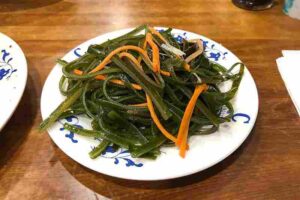
Because kelp can absorb excess nutrients and pollutants from the water in its surrounding, it serves as a natural remediation tool to improve water (and sediment) quality.
Some compounds that are found in kelp have potential applications in pharmaceutics.
Kelp is also used in agriculture as a natural fertilizer [1].
These applications are possible because kelp is a source of alginate; a substance used in various industrial applications, including in the food and pharmaceutical industries.
Ecological Roles and Relationship with Kelp Forests
Kelp forests are unique underwater ecosystems that form in shallow coastal waters by the dense growth of various macroalgal kelp species. This means that kelps are ecologically and geographically linked to kelp forests, which they help form through their growth.
Kelp forests serve as critical habitats and sites of breeding for a broad range of marine species, which include fish, various invertebrates, and mammals. It provides food and shelter to these marine organisms and may contribute significantly to the sustenance of marine food webs.
Geographically, kelp forests are found along approximately 25% of the world's coastlines [8], primarily occurring in temperate and subpolar regions.
*Shallow Water Kelp Occurrence
Kelp forests primarily develop in shallow open waters because they depend on light for photosynthesis.
Because the macroalga requires sunlight to grow, it is typically found in areas where sunlight can penetrate the water column.
Kelp is rarely found deeper than about 49 to 131 feet (15 to 40 meters), because light intensity decreases significantly with depth.
Kelp forests are among the most extensive marine vegetated ecosystems globally, and they provide vital ecological and economic services. Their presence in shallow coastal waters is mainly driven by their dependence on sunlight for photosynthesis, which limits their geographic distribution to areas where sufficient light can reach the seabed.
8). Sea Moss in Kelp Forests and Other Shallow Coastal Marine Environments
Sea moss, also known as Irish moss (Chondrus crispus), is a type of red seaweed that is found in shallow coastal marine environments.
It is a species of algae belonging to the family Gigartinaceae.
Uses of Sea Moss
Sea moss has dietary and medicinal uses.
In terms of its dietary use, sea moss is consumed as part of various dishes, and is known for its nutritional value. It is low in calories, sugar and fat, and is a source of vitamins and minerals such as calcium, potassium, magnesium, iodine, iron, vitamin C, and vitamin A [10].
Sea moss is utilized as a thickening agent in food preparation, and has a history of use in desserts, soups, and beverages.
It is also believed to have various health benefits, including providing essential nutrients and supporting the immune system.
Ecological Roles and Geographical Relationship with Kelp Forests
Sea moss is typically found in shallow waters in lagoons and on reef flats, often attached to solid surfaces, or lying by itself.
It contributes to the sustenance of coastal marine ecosystems by providing habitat and food resources for various marine organisms.
Geographically, sea moss is prominent along the Atlantic coasts, primarily between North America and Europe, as well as in the warm waters of Asia, Africa, and South America, and some parts of the Caribbean.
The algae also produces carrageenan, a thickening agent used in the food industry.
Additional Information on Sea Moss
Sea moss is often harvested from shallow water by dredging with special rake-like tools, or obtained from broken fronds cast ashore.
It has been historically used as a feed supplement for livestock by coastal homesteaders.
Sea moss is found along the Atlantic coasts, primarily between Europe and North America, and in the warm waters of Asia, Africa, South America, and some parts of the Caribbean.
In the ocean, sea moss is typically found in shallow waters within lagoons or on reef flats.
Sea moss capsules are often used as a dietary supplement, and are believed to provide multiple health benefits, including supporting the immune system and providing essential vitamins and minerals.
Lastly, sea moss is found in the warm waters of Africa, among other regions.
9). Sea Lettuce: A Primary Producer Among Plants in the Kelp Forest Ecosystem
Sea lettuce, scientifically referred to as Ulva lactuca, is a green seaweed that is classified in the phylum Chlorophyta, which comprises about 4,300 known species of green algae.
Within the Chlorophyta phylum, around 90% of species are known to thrive in freshwater environments [15].
Sea lettuce is characterized by its bright green color and lobe-shaped leaves that resemble lettuce leaves. These leaves are capable of growing up to 50 centimeters in length.
Habitat and Characteristics of Sea Lettuce
Sea lettuce commonly thrives in protected and semi-protected areas that range from intertidal to shallow subtidal conditions. It attaches to stable substrates like rocks or adjacent seagrass beds. It can also be found floating at mid-tide levels.
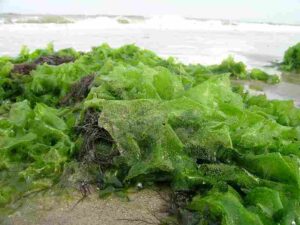
Sea lettuce is a highly opportunistic autotroph, and can grow rapidly, especially in areas with high levels of nutrient concentration. It possessed leaves that are typically one or two cells thick, which gives them a delicate appearance with perforated holes and tattered edges.
Ecological Roles of Sea Lettuce
Sea lettuce species, including Ulva lactuca, have some valuable ecological roles. For example, because they are fast-growing, these macroalgae can act as agents of bioremediation, by removing excess nutrients from the water column, such as those that originate from coastal runoff.
By reason of their sensitivity, blooms of sea lettuce can serve as indicators of nitrate pollution in marine environments [17].
Also, as part of oceanic food chains, seaweeds like sea lettuce provide a reliable foundation for various marine organisms.
Geographical Distribution of Sea Lettuce
Sea lettuce has a fairly broad geographic range, so that it is found in a variety of marine habitats, including rocky, shallow, and nutrient-rich coastal zones.
It can be encountered in sheltered to moderately exposed sandy or rocky shores, as well as in tidal pools and shallow waters near the low watermark.
Sea lettuce is present in calm coves, and is known for its fast growth in both natural and anthropogenic cultivated settings.
Overview of Location, Features and Functions of Sea Lettuce
Sea lettuce is known to commonly occur in shallow, nutrient-rich and rocky, coastal marine habitats. It attaches to hard lithic substrates, or vegetative masses like seagrass, and can also be found floating mid-tide.
Special features of sea lettuce include its bright green color, thin structure, and lobe-shaped leaves that are typically one or two cells thick.
Sea lettuce and similar seaweeds perform important ecological functions by acting as bioremediation agents, removing excess nutrients from the water column. They also provide a productive base for marine food chains.
Conclusion
Plants in the kelp forest include;
1. Eelgrass
2. Star Grass
3. Turtle Grass
4. Widgeon Grass
5. Shoal Grass
6. Manatee Grass
7. Kelp
8. Sea Moss
9. Sea Lettuce
References
1). Bl, R.; Vyas, R. V.; Patel, H.; Jhala, Y. K. (2019). "Perspectives of Seaweed as Organic Fertilizer in Agriculture." Soil Fertility Management for Sustainable Development (pp.267-289). Available at: https://doi.org/10.1007/978-981-13-5904-0_13. (Accessed 26 September 2023).
2). Bos, A. R.; Bouma, T. J.; de Kort, G. L. J.; van Katwijk, M. M. (2007). "Ecosystem engineering by annual intertidal seagrass beds: Sediment accretion and modification." Estuarine Coastal and Shelf Science 74(1-2):344-348. Available at: https://doi.org/10.1016/j.ecss.2007.04.006. (Accessed 26 September 2023).
3). Bringloe, T. T.; Starko, S.; Wade; R. M.; Kawai, H.; De Clerck, O.; Cock, J. M.; Coelho, S.; Destombe; C.; Valero, M.; Neiva; J.; Pearson, G. A.; Faugeron, S.; Serrao; E. A.; Verbruggen, H. (2020). "Phylogeny and Evolution of the Brown Algae." Critical Reviews in Plant Sciences. Available at: https://doi.org/10.1080/07352689.2020.1787679. (Accessed 26 September 2023).
4). Chen, J.; Zang, Y.; Shang, S.; Liang; S.; Zhu, M.; Wang, Y.; Tang, X. (2021). "Comparative Chloroplast Genomes of Zosteraceae Species Provide Adaptive Evolution Insights Into Seagrass." Frontiers in Plant Science 12:741152. Available at: https://doi.org/10.3389/fpls.2021.741152. (Accessed 26 September 2023).
5). Darnell, K. M.; Dunton, K. H. (2014). "Consumption of turtle grass seedlings by crabs in the western Gulf of Mexico." Marine Ecology Progress Series In Press. Available at: https://www.researchgate.net/publication/267268968_Consumption_of_turtle_grass_seedlings_by_crabs_in_the_western_Gulf_of_Mexico. (Accessed 26 September 2023).
6). Darnell, K. M.; Furman, B..T.; Heck, K.; Byron, D.; Reynolds, L.; Dunton, K. H. (2020). "Seed Reserve Hot Spots for the Sub-Tropical Seagrass Halodule wrightii (Shoal Grass) in the Northern Gulf of Mexico." Estuaries and Coasts 44(24). Available at: https://doi.org/10.1007/s12237-020-00808-y. (Accessed 26 September 2023).
7). Faherty-Walia, K. E.; Matheson, R.; Paperno, R. (2014). "Juvenile Spotted Seatrout (Cynoscion nebulosus) Habitat Use in an Eastern Gulf of Mexico Estuary: The Effects of Seagrass Bed Architecture, Seagrass Species Composition, and Varying Degrees of Freshwater Influence." Estuaries and Coasts 38(1):353-366, Available at: https://doi.org/10.1007/s12237-014-9821-6. (Accessed 25 September 2023).
8). Filbee-Dexter, K.; Wernberg, T. (2018). "Rise of Turfs: A New Battlefront for Globally Declining Kelp Forests." BioScience 68(2):64-76. Available at: https://doi.org/10.1093/biosci/bix147. (Accessed 26 September 2023).
9). Lepoint, G.; Mouchette, O.; Pelaprat, C.; Gobert, S. (2014). "An ecological study of Electra posidoniae Gautier, 1954 (Cheilostomata, Anasca), a bryozoan epiphyte solely found on the seagrass Posidonia oceanica (L.) Delile, 1813." Belgian Journal of Zoology 144(1):51-63. Available at: https://doi.org/10.26496/bjz.2014.65. (Accessed 26 September 2023).
10). Lomartire, S.; Marques, J. C.; Gonçalves, A. M. M. (2021). "An Overview to the Health Benefits of Seaweeds Consumption." Mar Drugs. 2021 Jun 15;19(6):341. Available at: https://doi.org/10.3390/md19060341. (Accessed 26 September 2023).
11). Meysick, L.; Infantes, E.; Rugiu, L.; Gagnon, K.; Boström, C. (2022). "Coastal ecosystem engineers and their impact on sediment dynamics: Eelgrass–bivalve interactions under wave exposure." Limnology and Oceanography 67(3). Available at: https://doi.org/10.1002/lno.12022. (Accessed 25 September 2023).
12). Monteiro, C.; Li, H.; Diehl, N.; Collén, J.; Heinrich, D.; Bischof, K.; Bartsch, I. (2020). "Modulation of physiological performance by temperature and salinity in the sugar kelp Saccharina latissima." Phycological Research 69(1). Available at: https://doi.org/10.1111/pre.12443. (Accessed 26 September 2023).
13). Peyre, M. K.; Rowe, S. (2003). "Effects of salinity changes on growth of Ruppia maritima L.." Aquatic Botany 77(3):235-241. Available at: https://doi.org/10.1016/S0304-3770(03)00109-8. (Accessed 26 September 2023).
14). Pfeifer; L.; Classen; B. (2020). "The Cell Wall of Seagrasses: Fascinating, Peculiar and a Blank Canvas for Future Research." Frontiers in Plant Science 11:588754. Available at: https://doi.org/10.3389/fpls.2020.588754. (Accessef 25 September 2023).
15). Ramos, G.; Bicudo, C.; Moura, C. W. (2018). "Diversity of green algae (Chlorophyta) from bromeliad phytotelmata in areas of rocky outcrops and “restinga”, Bahia state, Brazil." Rodriguesia 69(4):1973-1985. Available at: https://doi.org/10.1590/2175-7860201869431. (Accessed 26 September 2023).
16). Unsworth, R. K. F.; Nordlund, L. M.; Cullen-Unsworth, L. C. (2018). "Seagrass meadows support global fisheries production." Wiley, Conservation Letters 12(1). Available at: https://doi.org/10.1111/conl.12566. (Accessed 26 September 2023).
17). Wan, A. H. L.; Wilkes, R. J.; Heesch, S.; Bermejo, R.; Johnson, M. P. (2017). "What can sea lettuce tell us about coastal pollution?" Available at: https://www.researchgate.net/publication/318534530_What_can_sea_lettuce_tell_us_about_coastal_pollution. (Accessed 26 September 2023).
